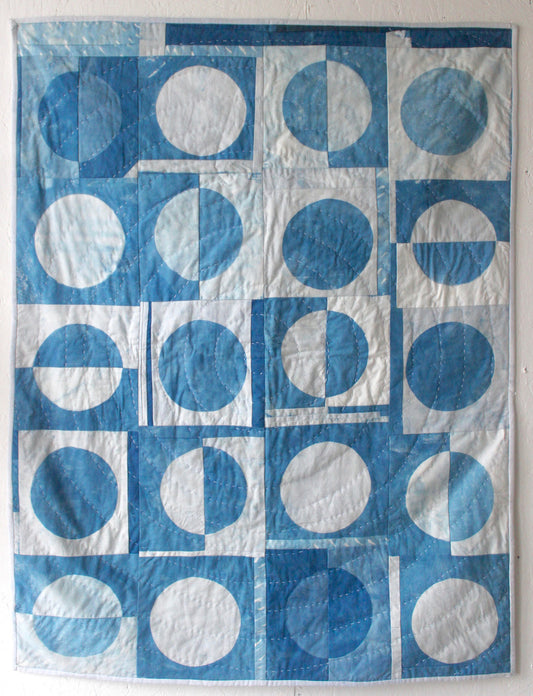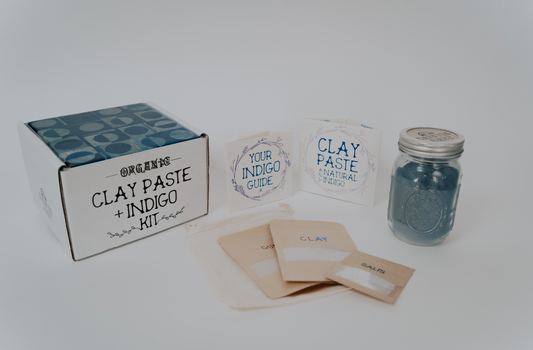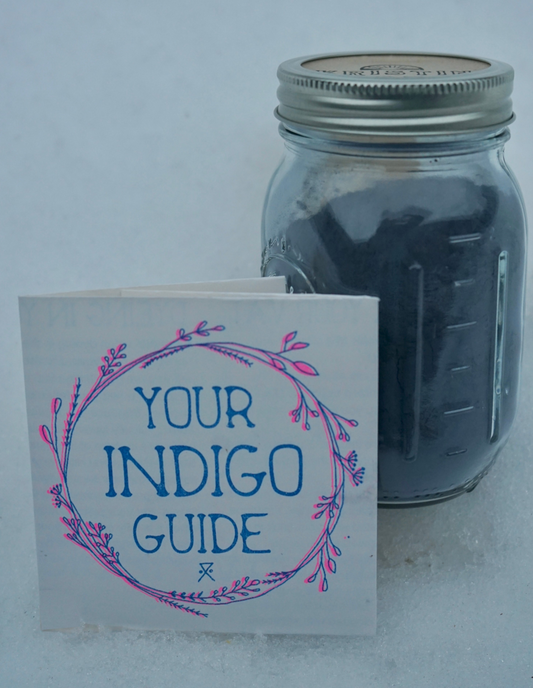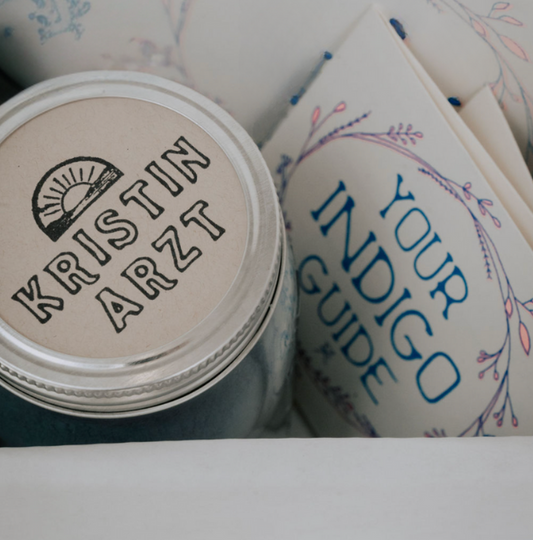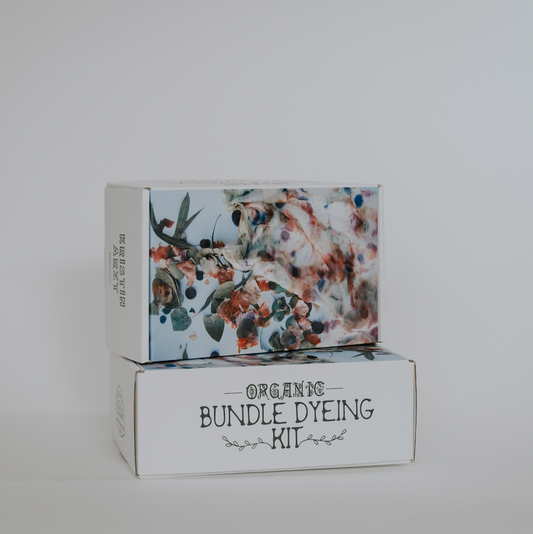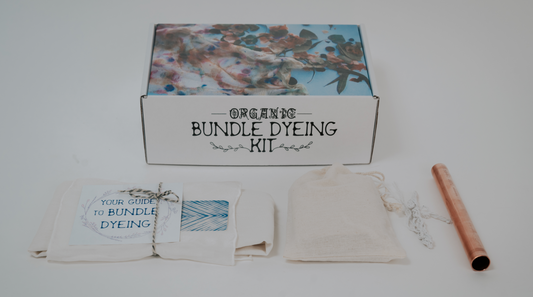A Step-by-step Guide to Pre-treating Protein Fabrics Before Dyeing

What is a Mordant?
Mordants are metal salts that chemically bond the pigment to the fiber during the dyeing process. Without a mordant, your natural dyes will fade in the wash and in the sun over time. Use of a mordant ensures brighter, long laster colors when used with plant dyes
The word mordant comes from the root 'mord-' meaning 'to bite' in Latin. You can think of the pigment actually biting into the fiber while your fabric is in the dye pot. There are a few different types of mordants available, and each gives you varying results. Aluminum-based metal salts, such as aluminum sulfate, will give you bright, clear colors. Ferrous, or iron, metal salts, like ferrous sulfate, will give you earthy or what’s known as 'saddened' colors. Natural dyes often rely on these mordants for effective results.
What is Protein Fiber?
Protein fibers are animal-based fibers. Examples of protein fibers are wool, silk, leather, and more. These fibers require a simple one-step mordanting process, involving a mordant soak in metal salts. Using natural dyes for textiles, especially with protein fibers like wool and silk, can yield beautiful results.
Tools and Materials for Mordanting Fabric
- Aluminum Sulfate
- Hot water
- Tongs
- Rubber gloves
- 1 pot that you do not use for cooking
- Gram scale
How to Pre-Mordant with Aluminum
Aluminum sulfate is the least expensive mordant. The amount of water in the solutions is not critical but it should be enough that the fabric can flow freely. This makes aluminum sulfate a popular choice in natural dyeing processes.
Ingredients
Aluminum sulfate at 15% weight of fiber. Dissolve the alum in enough boiling water (approximately 200% of the fiber weight) to completely dissolve the alum. Allow the solution to cool before using it in your natural dyeing and mordanting process.
8 Easy Steps to Mordanting with Aluminum Sulfate
To mordant protein fibers, like silk and wool, we will use a one-step method with Aluminum sulfate at 15% the weight of your fiber.
- Weigh your fabric. Use your scale to weigh the fabric in grams. Calculate 15% of that number to determine the amount of aluminum sulfate you may need.
- Dissolve the alum in enough hot water to completely dissolve the alum. Allow the solution to cool before adding your fabric.
- Add the dissolved alum solution to a pot large enough so that your fabric can flow freely in the mordant liquid.
- Add additional warm water (around 100-120°F) as needed to allow the textile to be completely immersed.
- Place the textile into the mordant bath.
- Allow your fiber to sit in the mordant bath for 1-2 hours, stirring occasionally. This ensures even mordanting during the natural dyeing process.
- While wearing rubber gloves, remove the textile and squeeze the excess mordant back into the bath. Save the mordant for re-use, if desired.
- Rinse your fabric well, to ensure that any unattached mordant is removed from the surface of the fiber.
Protein Fabric Mordanting FAQs
Can I reuse my mordant bath?
Yes! You can continue to use a mordant bath. After each use (soaking fabric in the bath), your mordant retains a half-life, meaning you can mordant half the amount of fabric from the prior soak. For example, if you just finished mordanting 100 grams of fiber, you can immediately thereafter add in 50 grams of fiber, then 25, and so on. This makes the mordanting process in natural dyeing more efficient.
What are the different types of mordants?
There are a few different types of mordants available, and each gives you varying results. Aluminum-based metal salts, such as aluminum sulfate, will give you bright, clear colors. Ferrous, or iron, metal salts, like ferrous sulfate, will give you earthy or what’s known as 'saddened' colors. These mordants are essential for achieving a wide range of natural dye colors.
Is vinegar a mordant?
Vinegar is not a mordant, but rather a pH modifier. After the natural dyeing process is complete, you can add your fabric to a mild vinegar-water bath. This slightly acidic solution will brighten the colors, making purples become pinker and yellows more orange.
Is soy milk a mordant?
Soy milk is not a mordant, but it acts as an assist when dyeing. You can think of it as a 'binding agent.' Pre-treating fiber in fresh soy milk attaches enzymes to your fabric that trick the pigment into thinking it is a protein fiber, often resulting in stronger and longer-lasting dye results in natural dyeing.



